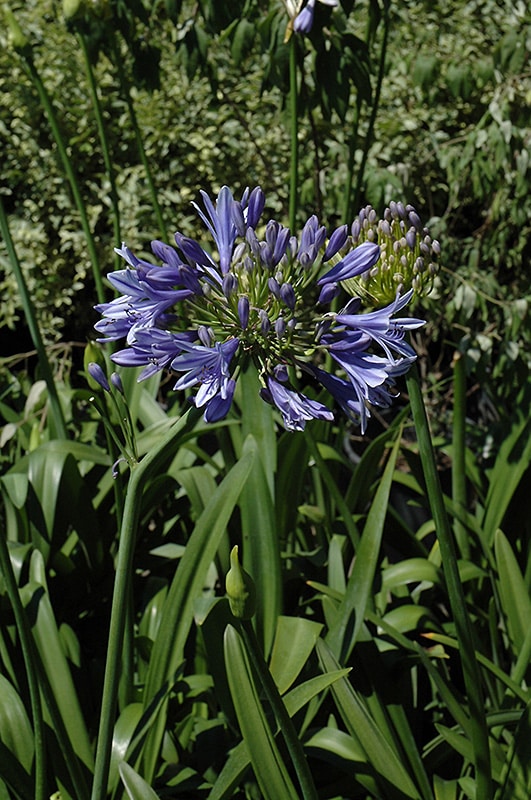How to Plant and Maintain Agapanthus in Your Yard
How to Plant and Maintain Agapanthus in Your Yard
Blog Article
Mastering the Art of Agapanthus Treatment: Necessary Steps for Healthy And Balanced Growth and Dynamic Blossoms
In the world of cultivation, the cultivation of agapanthus stands as a satisfying endeavor for those who look for to support these elegant blooming plants. With their striking flowers and graceful foliage, agapanthus has actually captured the attention of garden enthusiasts worldwide. However, achieving optimal growth and dynamic blossoms requires a nuanced approach that incorporates various crucial steps. From picking the ideal range to understanding pruning methods, the trip in the direction of growing flourishing agapanthus plants is complex and holds the vital to opening the full potential of these herb gems.

Choosing the Right Agapanthus Range

When selecting the right Agapanthus selection for your garden, consider elements such as climate viability, bloom shade, and development practice. Additionally, take into consideration the environment in your region to guarantee the Agapanthus range you choose can prosper in your specific problems. Comprehending the development routine of different Agapanthus varieties is vital for correct positioning within your garden.
Suitable Growing Conditions
Thinking about the ideal environmental demands is vital for effective Agapanthus growing. Agapanthus grows in well-draining dirt with a slightly acidic to neutral pH degree. When planting, select a place that obtains complete sunlight to partial shade. In hotter climates, offering some mid-day shade can avoid scorching of the leaves. Agapanthus plants are sensitive to cool temperatures and need to be protected from frost throughout winter season.
To ensure healthy development and lively blooms, plant Agapanthus light bulbs at a depth of regarding 2-4 inches and area them 8-12 inches apart. Mulching around the base of the plants assists preserve dampness and reduces weed growth.
Watering and Feeding Tips
Preserving proper moisture degrees and supplying vital nutrients are crucial elements in the treatment routine for Agapanthus plants. When it comes to sprinkling Agapanthus, it is critical to strike a balance. These plants prefer consistently damp soil but are prone to root rot if overwatered. During the expanding season, water deeply when a week, ensuring the soil is well-draining to avoid waterlogging. In hotter climates or throughout periods of dry spell, more frequent watering might be required to maintain the dirt equally moist. Nonetheless, minimize watering in the winter to avoid waterlogged conditions.
Feeding Agapanthus is crucial for promoting healthy and balanced development and respected blooms. Apply a well balanced fertilizer, such as a 10-10-10 formula, in the very early spring as new development emerges. By following these watering and feeding suggestions, you can ensure your Agapanthus plants prosper and generate lively, long-lasting blossoms.
Pruning Methods for Agapanthus
Pruning Agapanthus plants at the ideal times and with proper strategies is important for keeping their these details health and advertising optimal development and flowering. The suitable time to prune Agapanthus is in late wintertime or early spring prior to new growth arises. Begin by getting rid of any dead or yellowing leaves near the base of the plant. Cut them as short as feasible without harming the arising shoots.
Deadheading spent flowers can additionally reroute the plant's energy into creating more blooms instead than establishing seeds. If you want to accumulate seeds for proliferation, leave some flowers to completely dry and mature on the plant.
Keep in mind to utilize tidy, sharp tools to make exact cuts and decrease the risk of presenting illness. Agapanthus. Normal trimming will certainly assist maintain your Agapanthus looking neat and healthy and balanced while ensuring a plentiful screen of stunning flowers
Taking Care Of Typical Pests and Conditions
After ensuring correct pruning techniques for Agapanthus, it is essential content to resolve common pests and diseases that can influence the health and vigor of these plants. One usual pest that impacts Agapanthus is the Agapanthus gall midge.
One more common problem is fungal fallen leave area, which provides as dark lesions on the leaves. To stop fungal illness, make certain excellent air flow around the plants, stay clear of overhead watering, and remove any type of infected leaves without delay. Furthermore, Agapanthus plants can experience origin rot if they are planted in poorly draining soil. To avoid this, plant Agapanthus in well-draining soil and stay clear of overwatering. By being alert and taking punctual action versus illness and pests, you can assist your Agapanthus plants flourish and produce vibrant blossoms.

Final Thought
Finally, understanding the art of agapanthus treatment involves selecting the best range, supplying ideal growing conditions, proper watering and fertilizing, suitable pruning strategies, and resolving common pests and diseases. By adhering to these important actions, you can guarantee healthy development and vivid blooms for your agapanthus plants. Bear in mind to on a regular basis monitor and maintain your plants to advertise their overall wellness and longevity.
To guarantee healthy growth and lively flowers, plant Agapanthus bulbs at a depth of concerning 2-4 inches and room them 8-12 inches apart. By following these watering and feeding pointers, you can guarantee your Agapanthus plants prosper and create vivid, long-lasting flowers.
One common bug that impacts Agapanthus is the Agapanthus gall midget. Additionally, Agapanthus plants can endure from root rot if they are planted view in inadequately draining dirt. By complying with these vital steps, you can make sure healthy and balanced development and vivid blossoms for your agapanthus plants.
Report this page